Space Shift
Curated by artist Sarah Kogan
Guest art critic: Richard Dyer
APT Gallery
Harold Wharf
6 Creekside
Deptford
London SE8 4SA
19 October to 4 November 2018
Private view: 18 October 2018 18.00 - 20.00
Artist talk & poetry reading: 4 November 2018 15.00 - 17.00
Wendy Anderson, Neel Bakhle, Jeremy Bubb, Maria Chevska, Richard Dyer, Adam Gray,
Sarah Kogan, Enzo Marra, Jane Millar, Galen Riley, Susan Sluglett, Rachel Warriner
The structure of APT Gallery lends itself to an interrelated reading of the works, in that as we move through the three spaces, views of work sited in diagonal aspect to each are glimpsed through the architectural space and lead us towards an unfolding combination of image, object or screen. The gallery itself is presented as a single artwork with interconnecting elements placed within it. The aim is that this may direct the gaze of the viewer to new horizons and interiors or shift them into an aerial and psychological free fall.
The exhibition will conclude with a round table discussion with a selection of the artists followed by a Q & A. This will be followed by a poetry reading by Richard Dyer which focuses on a psychogeographical journey between different cities and landscapes, an emotional and poetic 'space shift'. 4 November, 3-5pm, 2018.
For all press enquiries please contact Sarah Kogan:
mail@sarahkogan.com
Wendy Anderson's current practice is based on her extensive world travel, with notes, photographs and drawings conflated in a series of mixed media paintings and drawings. The works are infused with architectural forms derived from the cities visited. Having lived in many high-rise hotels, views of rooftops and the aerial view of the cities structure influences the space within the paintings. Structures are propped, stacked or stand in isolation.
>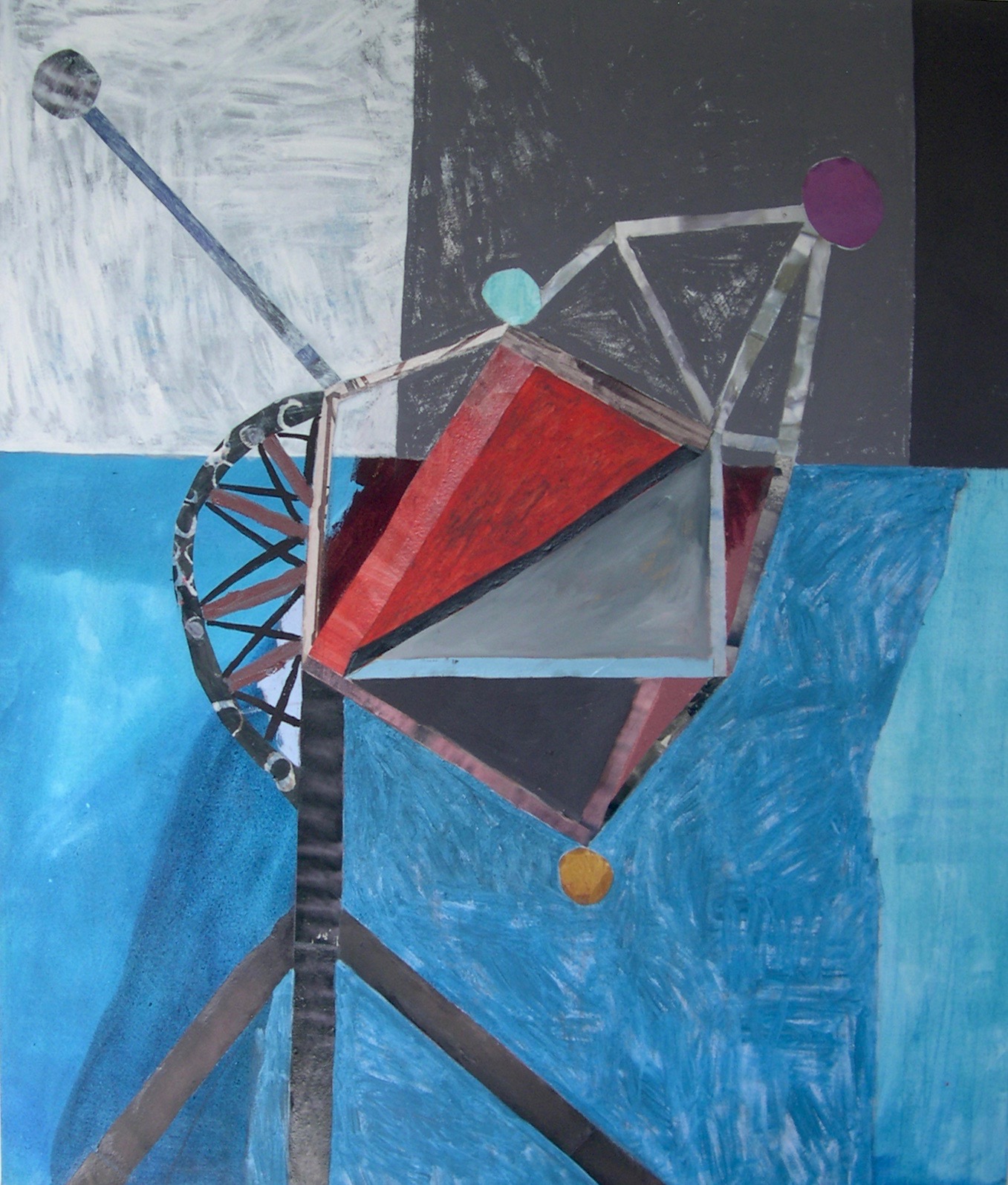
Neel Bakhle's new installation the artist subverts notions of solid and fluid, ethereal and real. Both pieces are in response to the surrounding environment, bringing the outside in, and then out again, in order to examine the parochial and familial against the strange, so as to question in which space reality lies.
Jeremy Bubb's multi-screen moving image installation In Search of a Past uses horizontal editing to explore a day in the life of his mother, Dorothy, a dementia sufferer who went missing from her home in search of her past. The piece deploys three screens to signify separate time periods of Dorothy's life, represented through a moving image sequence of the home she left behind and a collection of family photographs. Dementia has been described as looking through a series of memories in a family photograph album, only to find random images interspersed with blank pages.
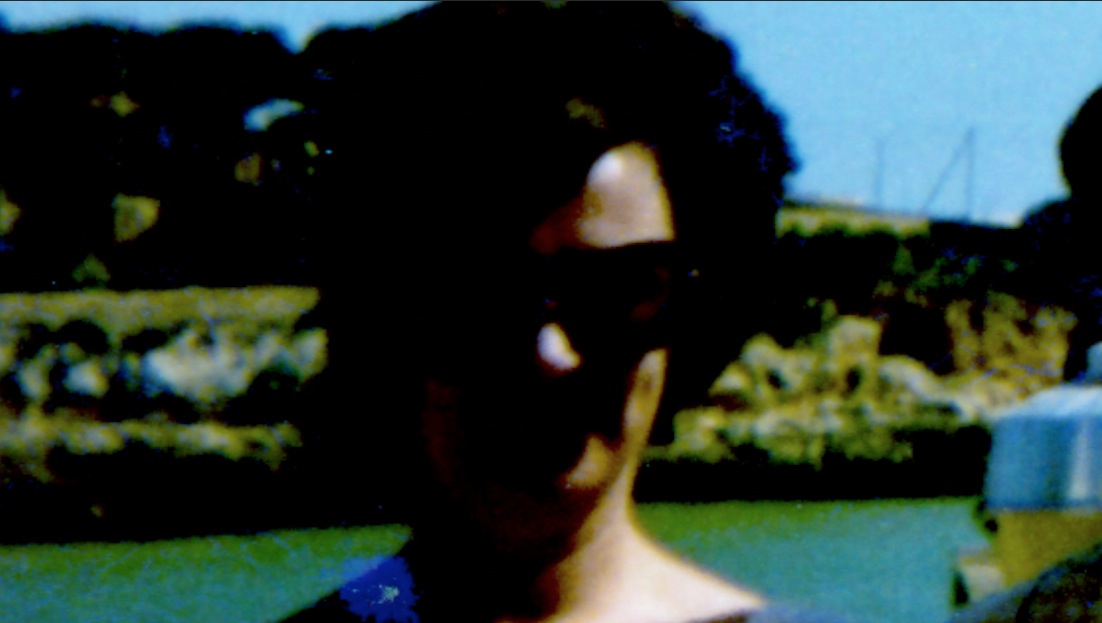
Maria Chevska Moving away from the presentation of a single canvas Chevska is interested in placing paintings within the architectural spaces that people inhabit. Recent explorations include abutting a number of canvases, with painted fragmented images, in a form that unfolds from the floor and rises up the wall, above head-height. The works are of human scale, some taking a cruciform, figure-like shape. The work in this exhibition places paintings and their accompanying sculptures in 'conversation' with the gallery space, and with some of the other artists' works.
 2017jpg.jpg)
Richard Dyer This series of works deconstructs the notion of the gesture in painting. Trompe-l'oeil Illusionism is deployed in order to virtually separate the painted mark from the canvas support, thus rendering it a discrete object in its own right, seemingly untethered from the flat two dimensional surface of the canvas. The work therefore not only questions the nature of space, but also the integrity of the painting itself. The work is a reaction against the strict tenets of a Greenbergian aesthetic that decrees the supremacy of the flat surface of the painting over the evocation of illusionistic depth. However, Dyer also rejects the image as a referent, embracing the gestural and abstract.
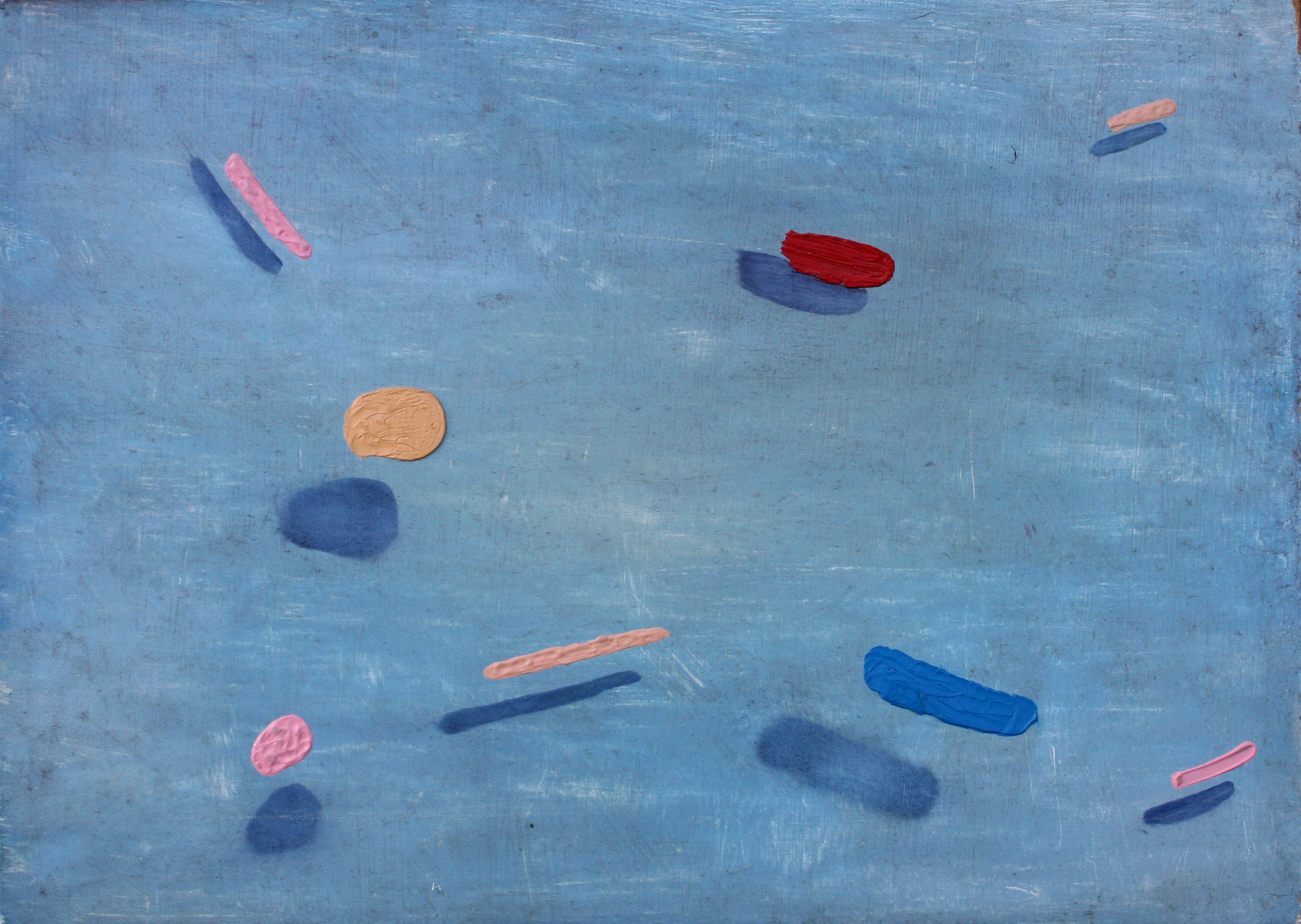
www.instagram.com/richardxdyerart
Adam Gray allows his paintings to slowly reveal their meanings over repeated viewings, leading to new interpretations or details. They remain deliberately vague and open to interpretation, capable of constantly provoking new questions and re-asking old ones whether in relation to colour, form or alternative readings of the image as a whole. Details are hidden or overlooked if the viewer only observes from a distance. But if they feel drawn to look closer they might have a very different experience, almost as if looking at two different paintings.
www.instagram.com/adam_gray_southgate_studios
Sarah Kogan's current practice revolves around ideas of landscape, abstraction and memory, relating to a visceral connection with our psychological relationship to space and object. Narrative is present in the motifs of abyss, crater, cluster or illuminated cavity. The emotional content of the work includes implications of death, loss or transcendence. In addition there is an ambiguity, within much of the work, as to whether we are observing a solid object floating in space, or a cavity observed from an aerial perspective.
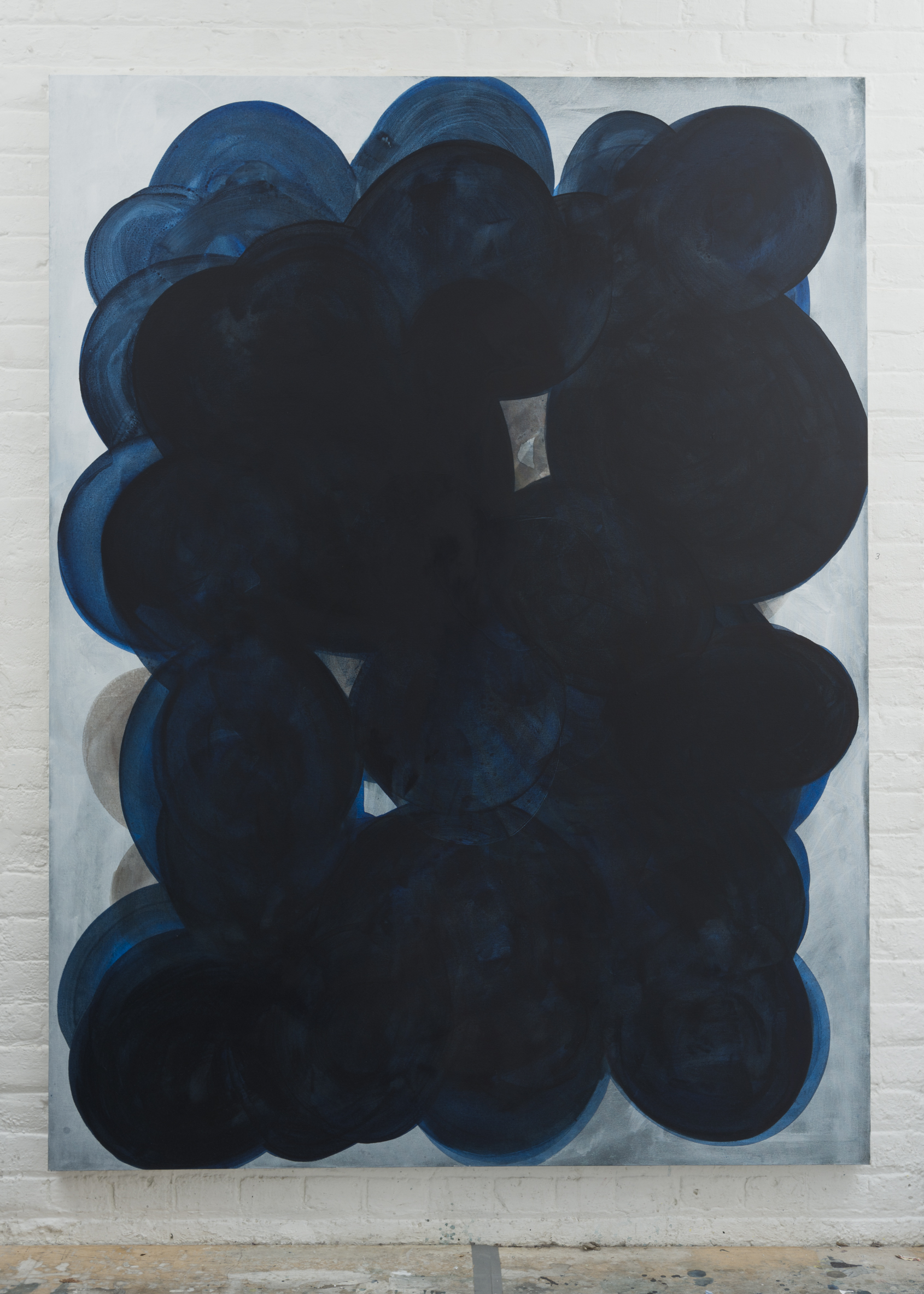
Enzo Marra's Portable Mural is a development from an earlier painting which depicts a mural of three large scale finger motifs placed in a darkened space. Using acrylic on loose canvas for this over human sized piece, Marra has accentuated the scale of his subject whilst retaining the immediacy of execution. Initially a visual pun on finger painting, they have taken on a relevance and role as instigators of a social commentary, whether they are seen in dark expanses or planted within a deluge.
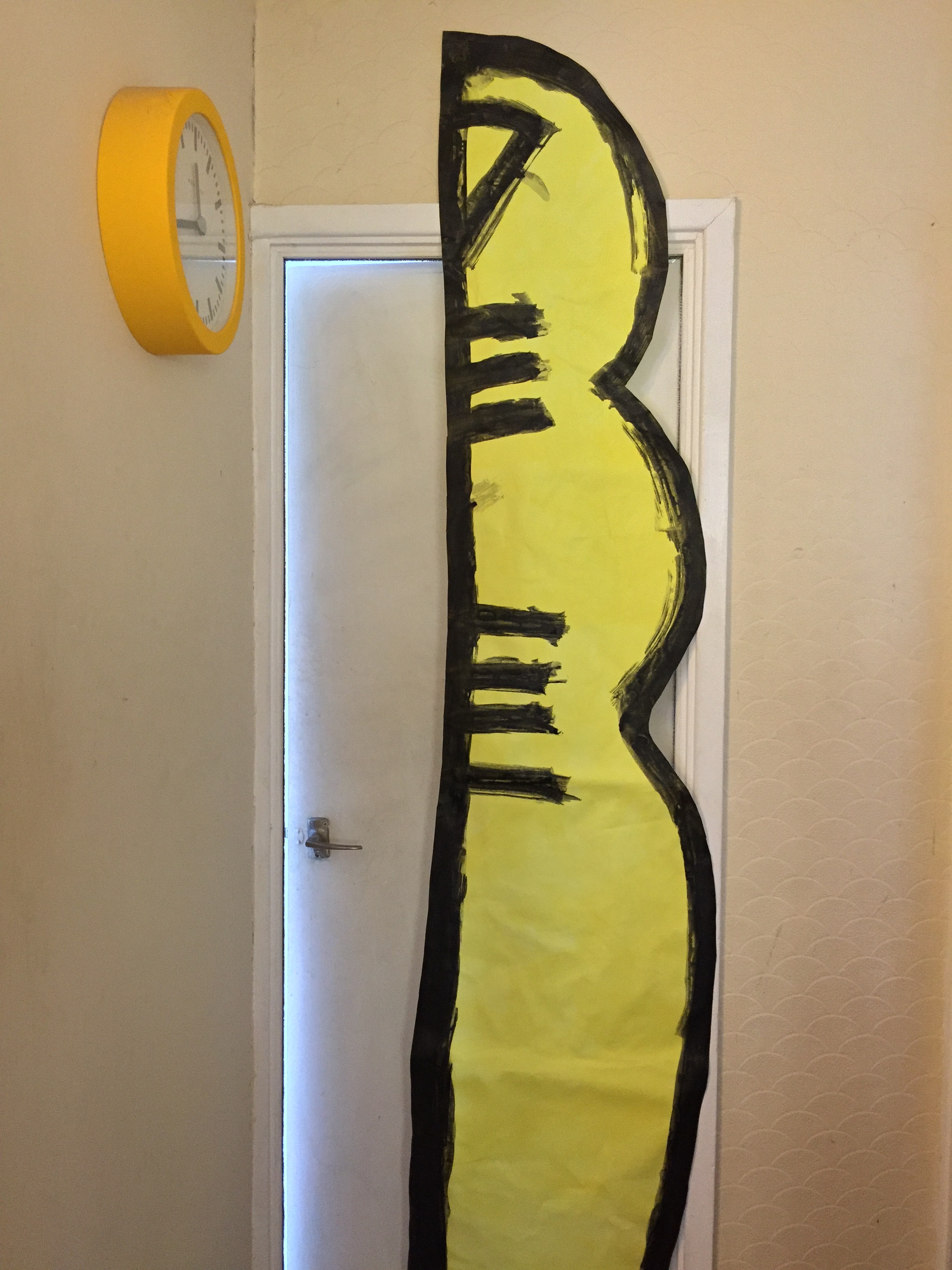
Jane Millar Grip uses the gallery space to create an installation of ceramic foot or hand 'holds' which are installed to the interior height of the gallery. Climbing walls in indoor sports centres work our bodies upwards through strength and stamina, they offer no natural vista. Installed in a white cube space, the holds that make up Grip scale the walls, reaching beams, with ladders or scaffolding, alluding to and questioning artistic aspiration, even privilege, which a position of height assumes. The footholds present approximations and mockeries of natural forms, with the seduction and longing, materiality and fragility of ceramics.

Galen Riley Having observed a kingfisher near the APT Gallery on Deptford Creek, and encountering Clyde Hopkins's reference to a similar kingfisher at his recent funeral, this avian's darting and elusive reputation has become the focus of Riley's latest string installation. The movements of this 'psychedelic' interloper are gestured at by stretched polychromatic paracords; orange, cyan, black and white, like the bird itself. The contact points or fixings of the paracords are old, recent and new, alluding to a movement through time. Riley continues to pursue a sense of extra dimensional space with illegitimate constructs. In this space a dismantled body is not necessarily dead. (Excerpt from Deptford Waterfowl Guide, Clyde Hopkins (1946-2018): 'Kingfisher'/Small brightly coloured bird/With sharp beak and tongue/Introduced into UK along with/Psychedelic drugs. Usually seen/Just after it has gone./Eats fish, chips, mushy peas.)
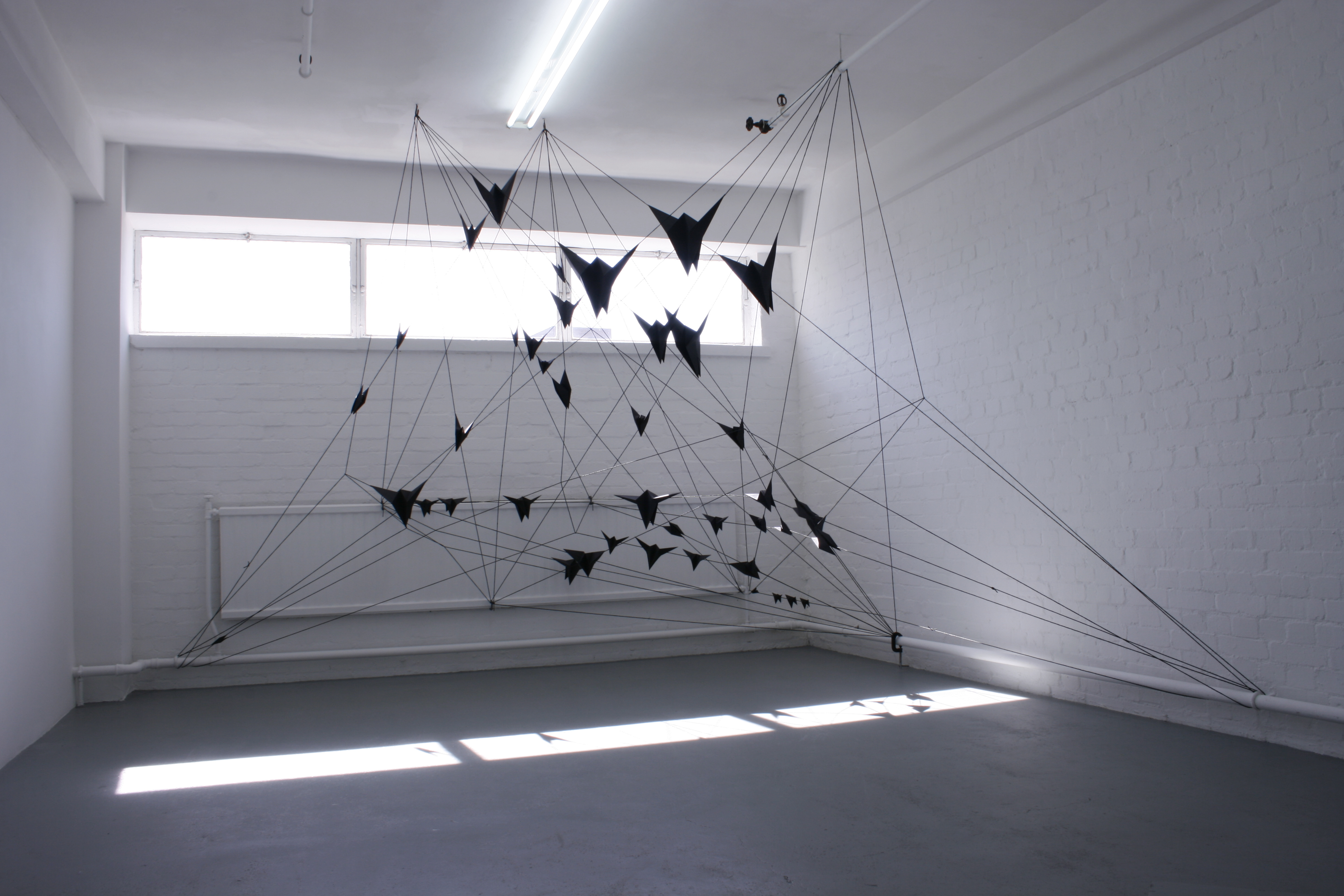
Susan Sluglett The work is part of an ongoing exploration related to loss, combined with the history of an important relationship. Sluglett has been living and working with the belongings, in particular a shoe collection, of a recently deceased and very dear friend. 'I have danced with Hamish in kitchens and sitting rooms across London... we danced in the streets, late into the night... on the Cycladic island of Sifnos... on a boat travelling down the River Thames; in nightclubs and bars and, in the summer of 2016, at Fete de la Musique in Paris.' The artist's open and unscripted investigation is expressed in her studies of these personally valuable narrative props in charcoal and plaster.
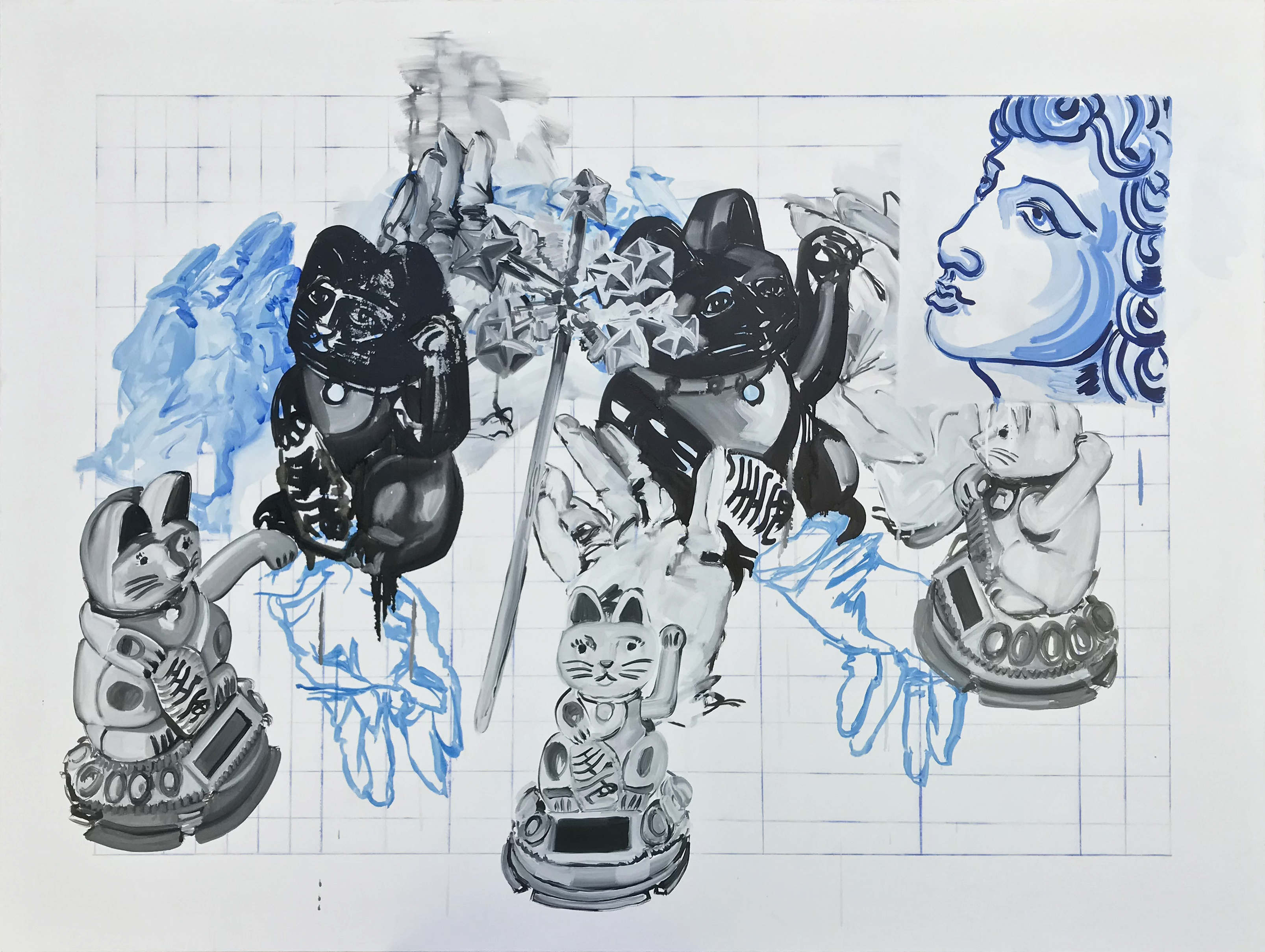
Rachel Warriner's acrylic paintings contain semi-abstract motifs which embody the essence of a landscape; the continual horizon line of the sea, the curvature of a road. Other forms come into play through a found or invented geometry. The more recent work has used loose graphic colour fields coupled with a build-up of thin washes to create 'space shifts'. This interplay of thin washes and more solid shapes denotes an empty space which alludes to the tension between permanence and disappearance. There is a reductive pairing down of forms in a search of a shift that maybe unsettling or ambiguous.
www.instagram.com/paintermeetspoet